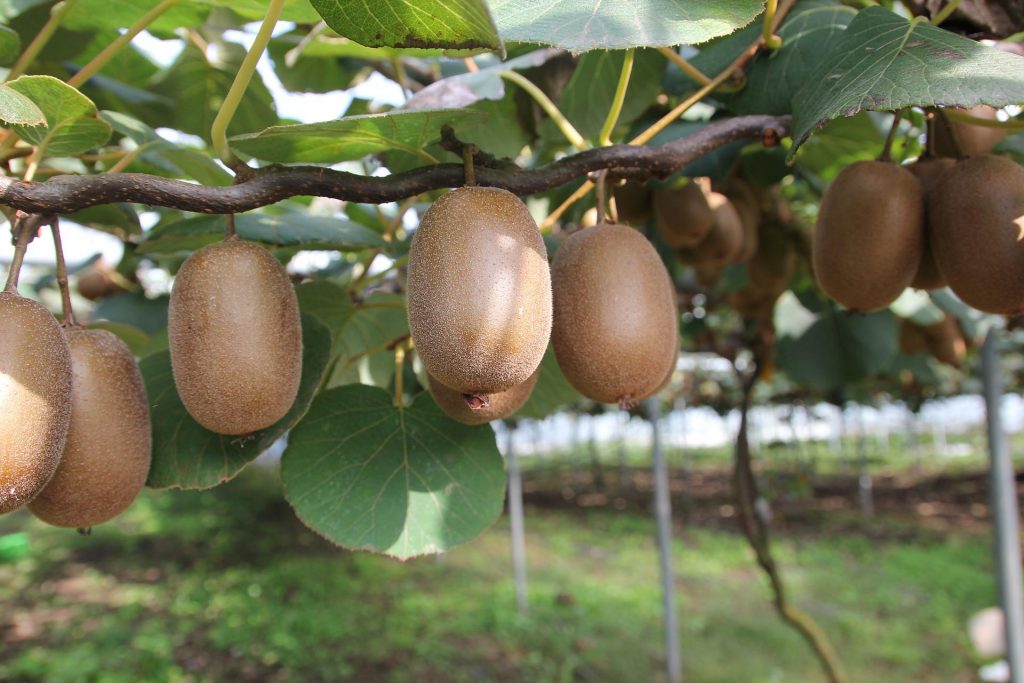They say that “health comes through the mouth”. Kiwifruit is one of the most beneficial fruits for promoting good digestion. It contains actidine, an enzyme similar to papain (from papaya) which aids digestion.
The somewhat acidic taste of the green varieties makes some consumers prefer the yellow varieties. But what do we know about this fruit, rich in vitamin C, which is exotic and relatively new to Spain?
EDYPRO has compiled the most interesting facts about it.
HISTORY AND ORIGINS
It is just over half a century since the official name Actinidia Deliciosa, or “Chinese gooseberry”, was given the name “Kiwi”, as it is known today. New Zealanders were the first to select, cultivate and market this exotic fruit from China.
The home of origin of the Kiwi is the Yangtze Valley, where it was discovered by a French Jesuit on a mission in China. But it was not until 1904 that a New Zealand teacher brought the black seeds to New Zealand. There they were planted for the first time in 1905 by the horticulturist Alexander Allison.
The New Zealanders were also the first to develop different varieties of Kiwifruit. The most outstanding is the Hayward variety, which was discovered in 1920 by the scientist Hayward Wright, to whom it owes its name.
Around 1934, its cultivation was already a success and it began to be marketed locally. In 1952, only 18 years later, the first fruits began to be exported to England. And in 1959 the New Zealanders decided to call this fruit kiwi, like the country’s national bird.
Its taste was so good that it began to be marketed in other countries. From 1960 onwards, the kiwifruit was intensively cultivated in countries such as France, the USA, Japan, Italy, Chile and Greece. And shortly after 1971 it arrived in Spain, so it is a very recent crop.
PRODUCTIONS
At world level, according to the FAO Production Yearbook (2000), the main producing countries are Italy with 352,892 tonnes, New Zealand with 217,000 tonnes, Chile with 145,000 tonnes and France with 72,000 tonnes. In 2000, Spain was in ninth position in terms of world production with a total of 13,800 tonnes.
However, in the 2019 season, according to data from the Ministry of Agriculture, Fisheries and Food (Map), a total of 24,508 tonnes were produced at national level, which shows its positive evolution and acceptance in the national shopping basket.
In fact, its share among Spaniards has grown by 8% year-on-year over the last five years. As a result, Spain is one of the world’s leading per capita consumers.
By region, according to the Map’s data, Galicia continues to be the main producer at national level with a total of 14,306 tonnes in 2019. This represents 60% of the total Spanish volume. It is followed by Asturias with 4,912 tonnes. Meanwhile, the variety grown most is the green kiwi with 77.5% of the total.
REQUIREMENTS OF THIS CROP
As far as the climate is concerned, spring frosts mainly affect sprouting. Therefore, temperatures of -2ºC to -3ºC endanger production. If the temperature drops to -5°C, the entire aerial part of the plant can be affected.
Wind is also one of the limiting factors. It causes mechanical effects, breakage of plant organs and difficulties in pollination, as well as physiological imbalances and increased evapotranspiration rates.
As far as humidity is concerned, it is essential to choose areas near rivers and valley bottoms that are protected from the wind with high ambient humidity. And deep soils with good drainage.
PROPERTIES
- Because of its high fibre content, mainly soluble fibre, it is a fruit recommended in case of constipation.
- As far as vitamins are concerned, it is worth highlighting its high vitamin C content. One kiwifruit covers 85% of the recommended daily intake of this nutrient.
- It also contains actidine, which aids digestion, and myosmin, which some studies suggest plays a beneficial role in oesophageal adecocarcinoma.
- It strengthens the immune system, acts as an antioxidant, combats high cholesterol levels and improves skin quality.
Do you still have any doubts about eating this refreshing and exotic fruit, the kiwi?


It’s actually a cool and useful piece of information about Kiwifruit. I’m satisfied that you shared this useful
info with us.
Please stay us up to date like this.
Thank you for sharing.